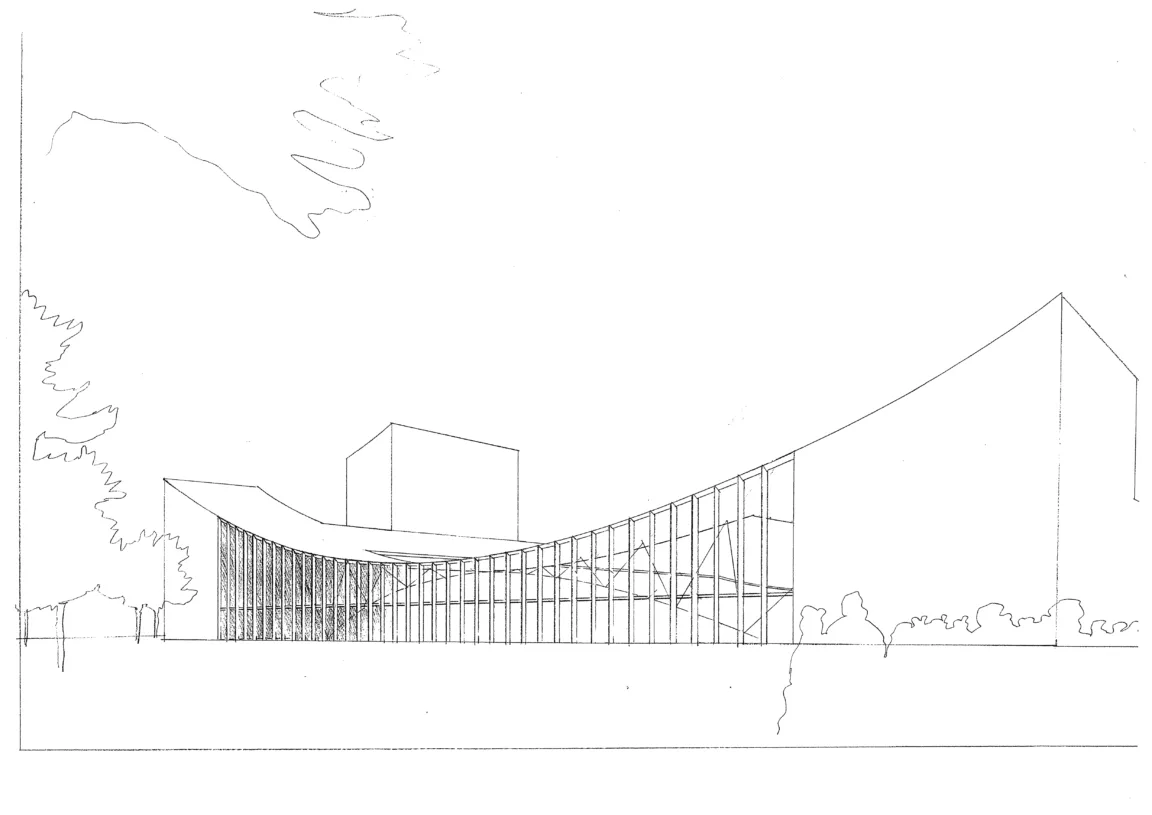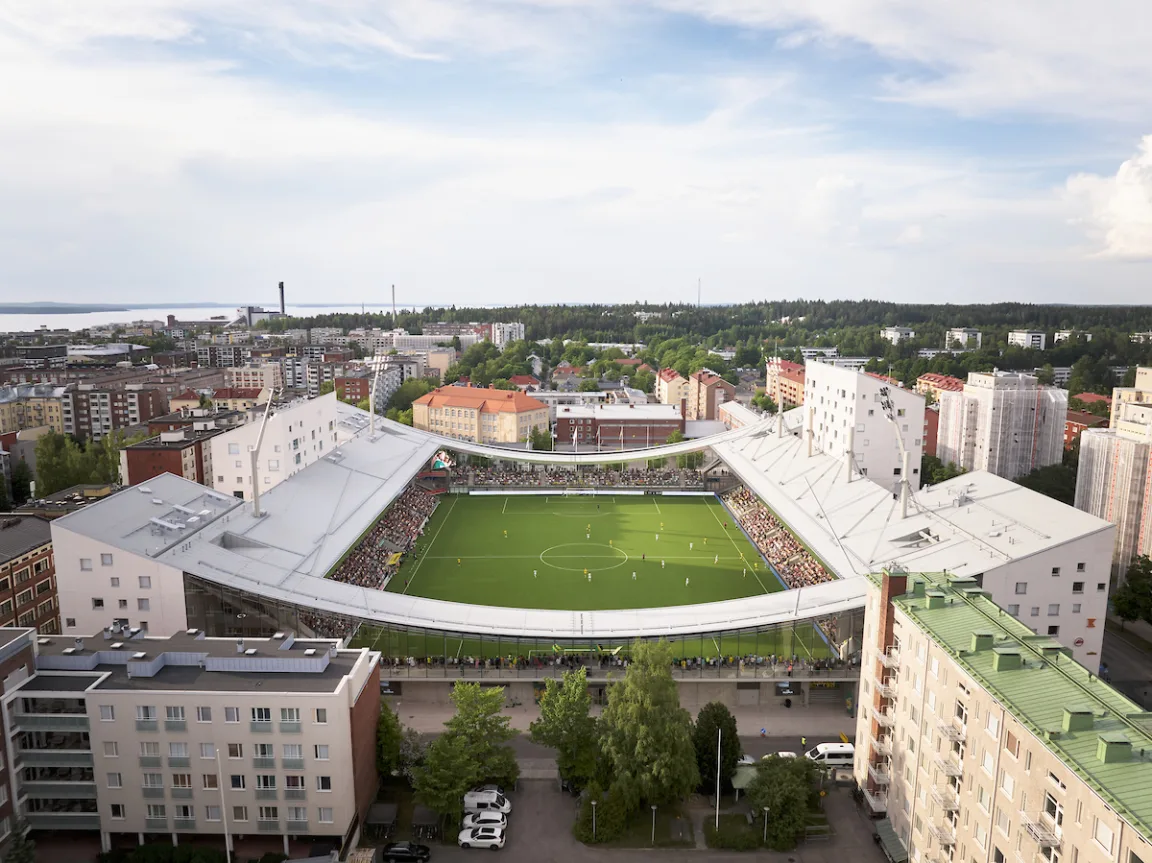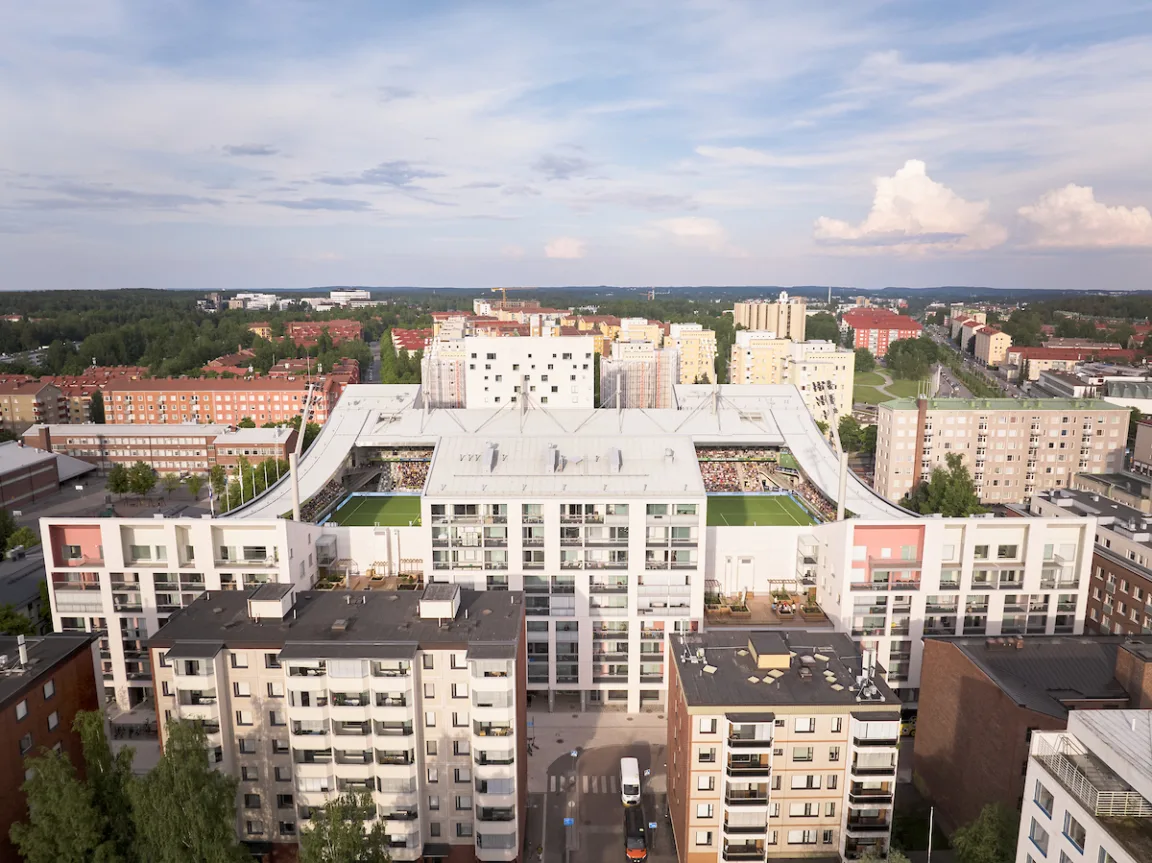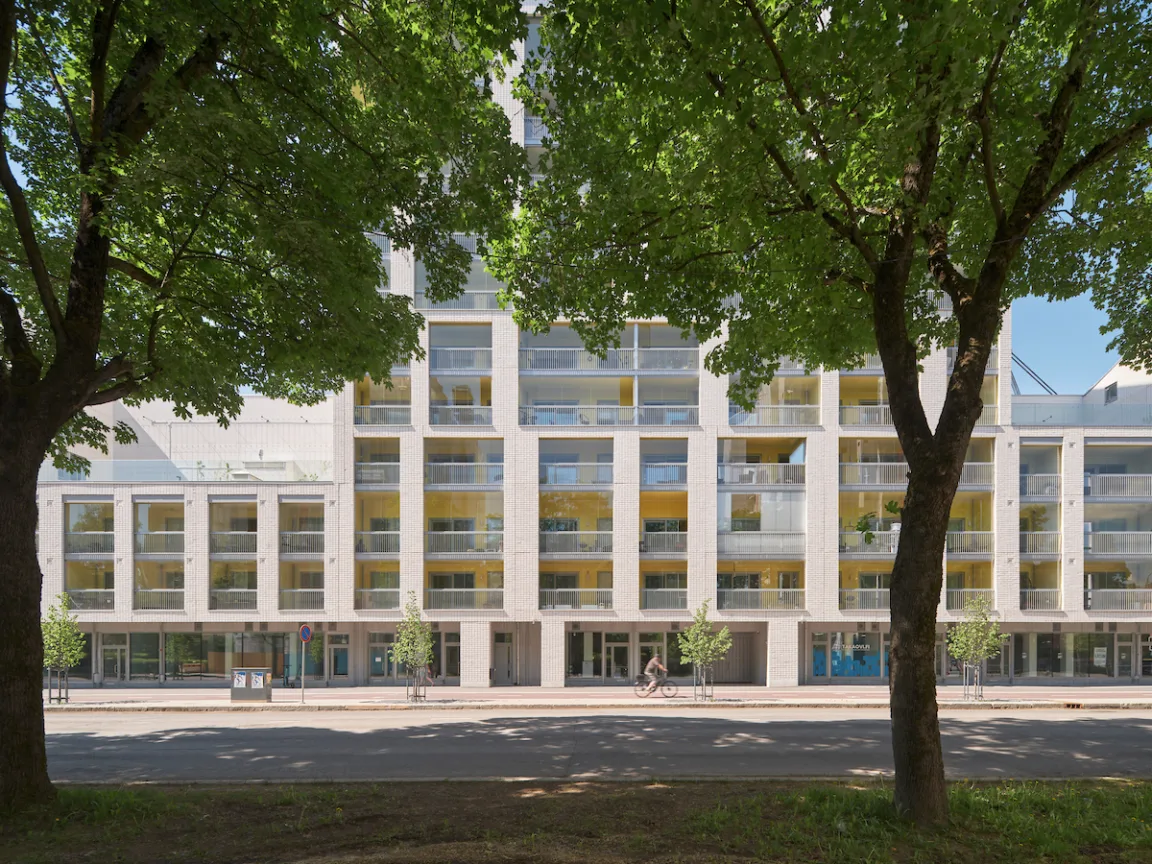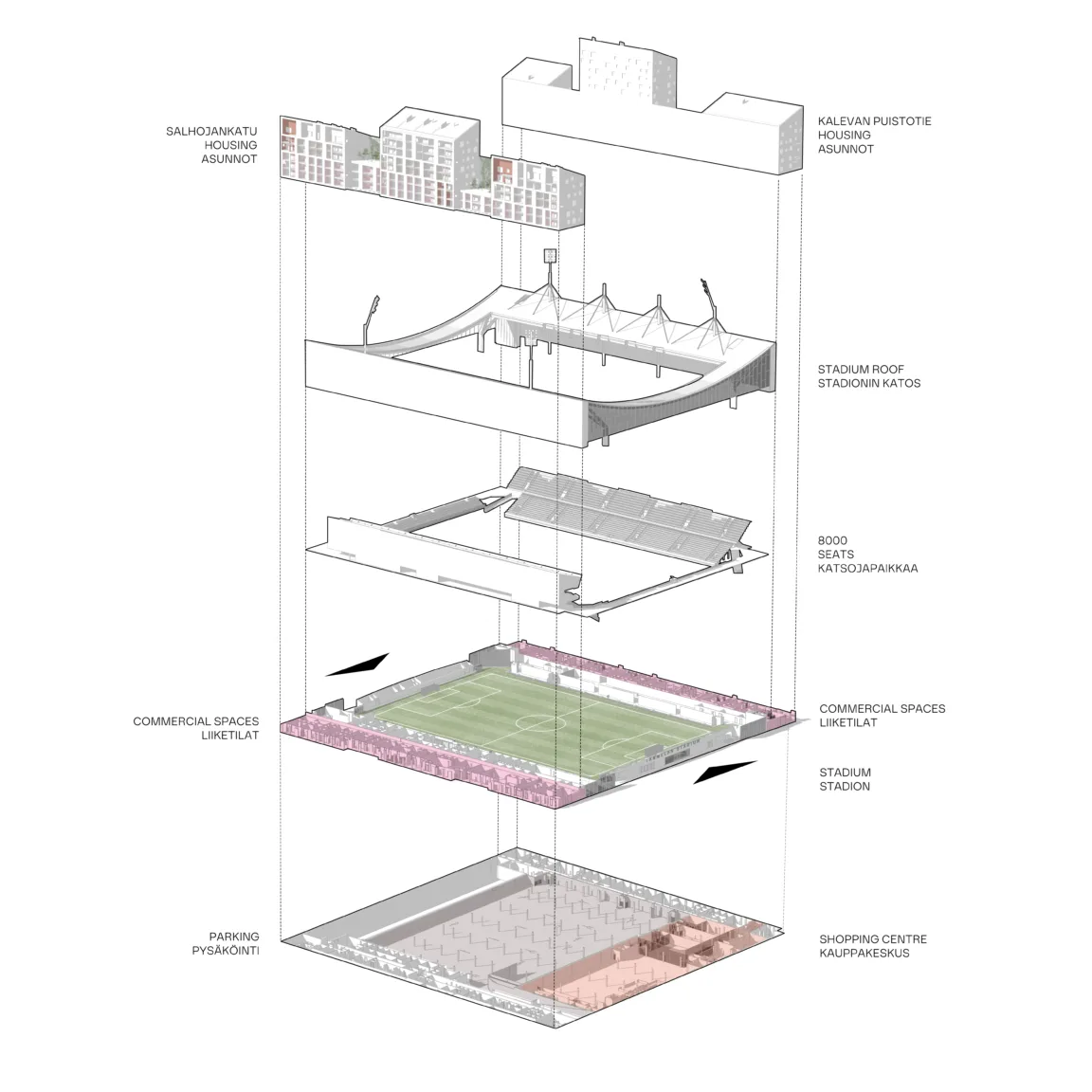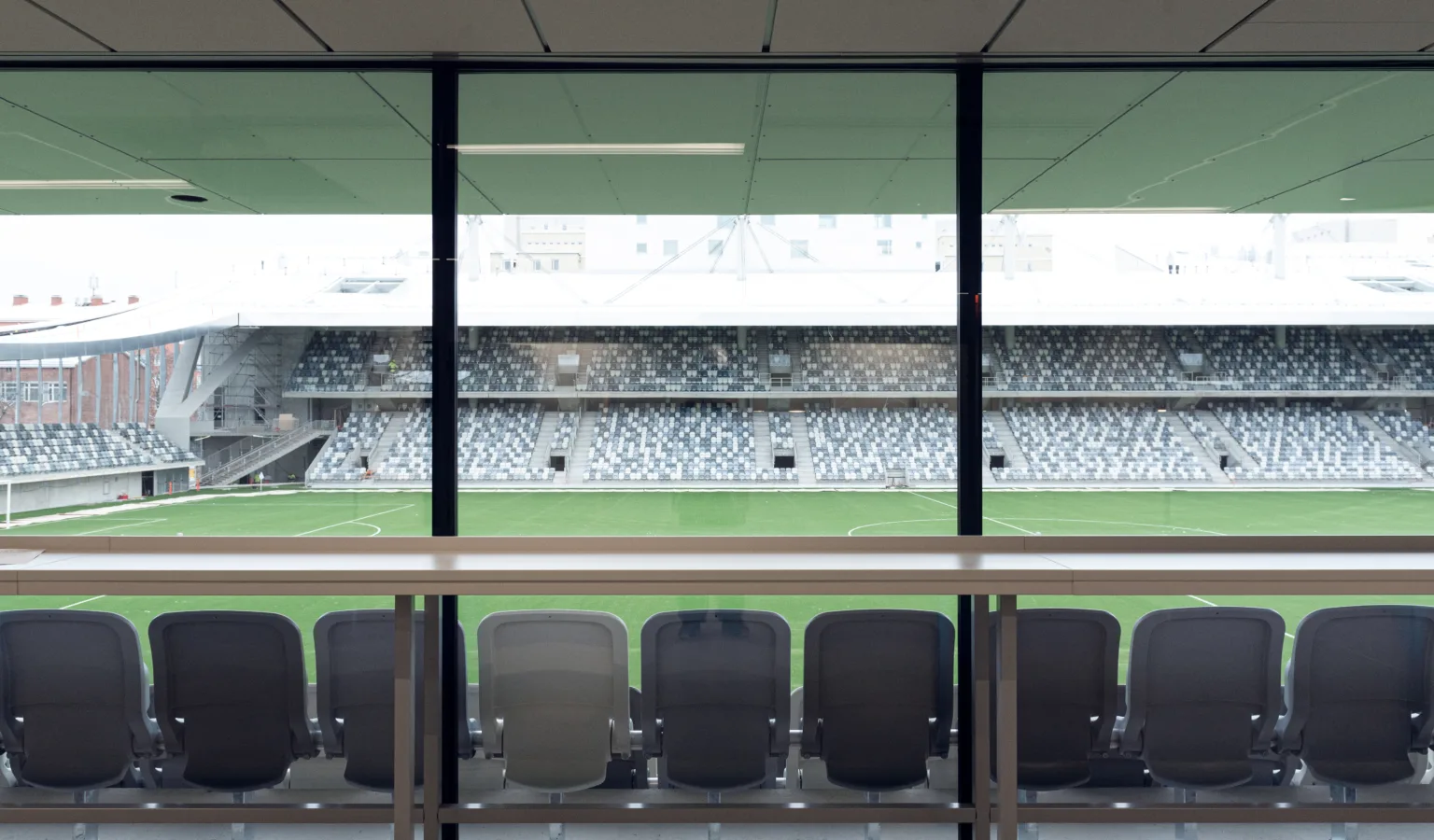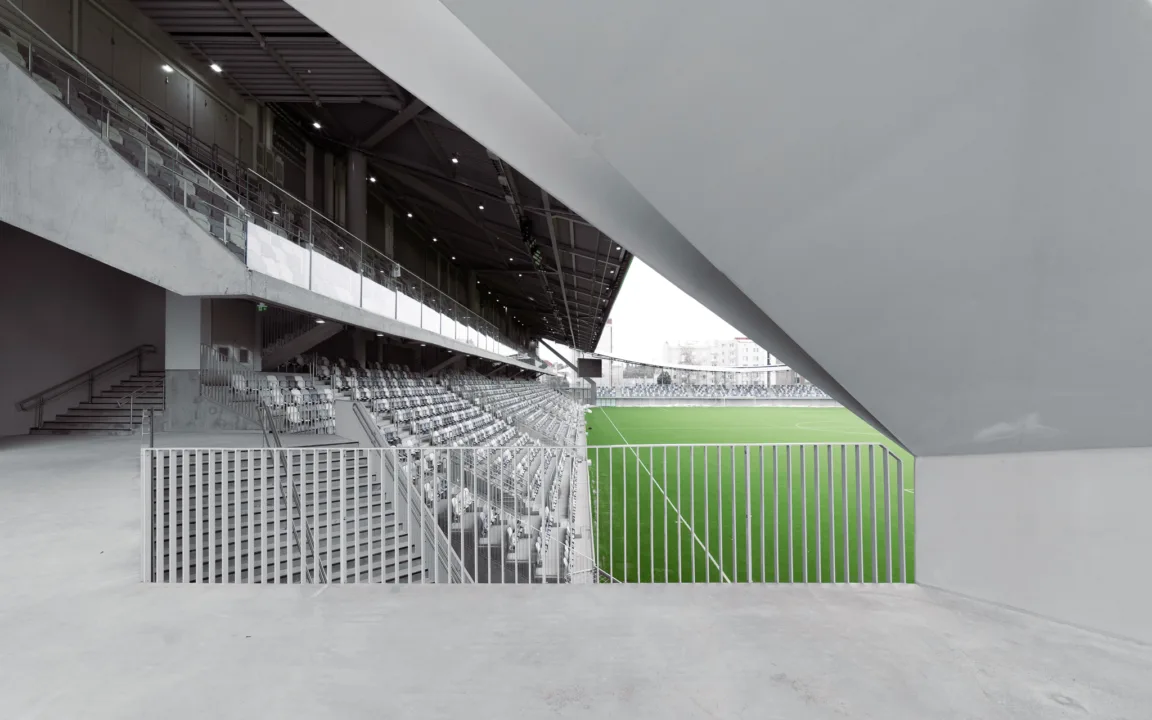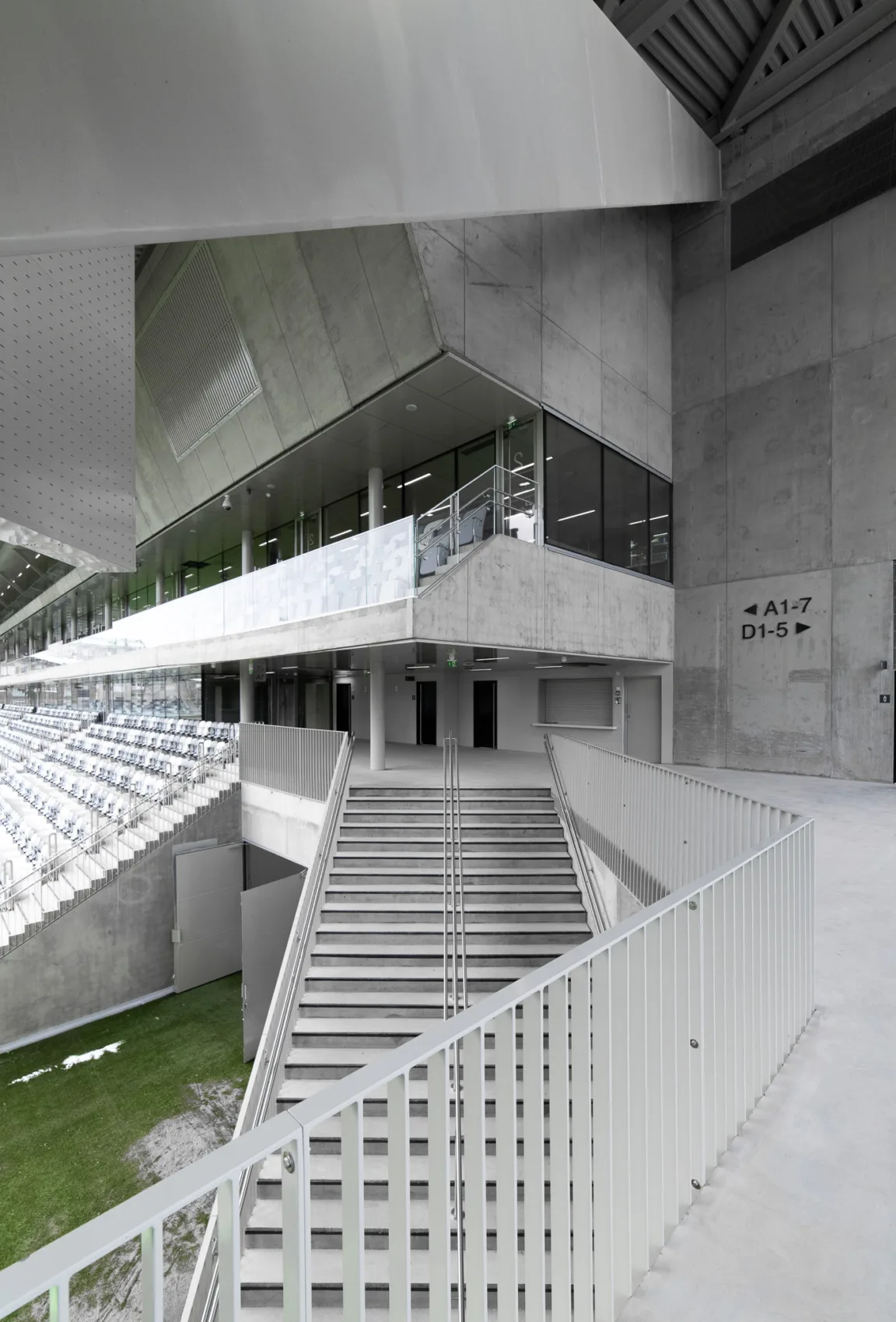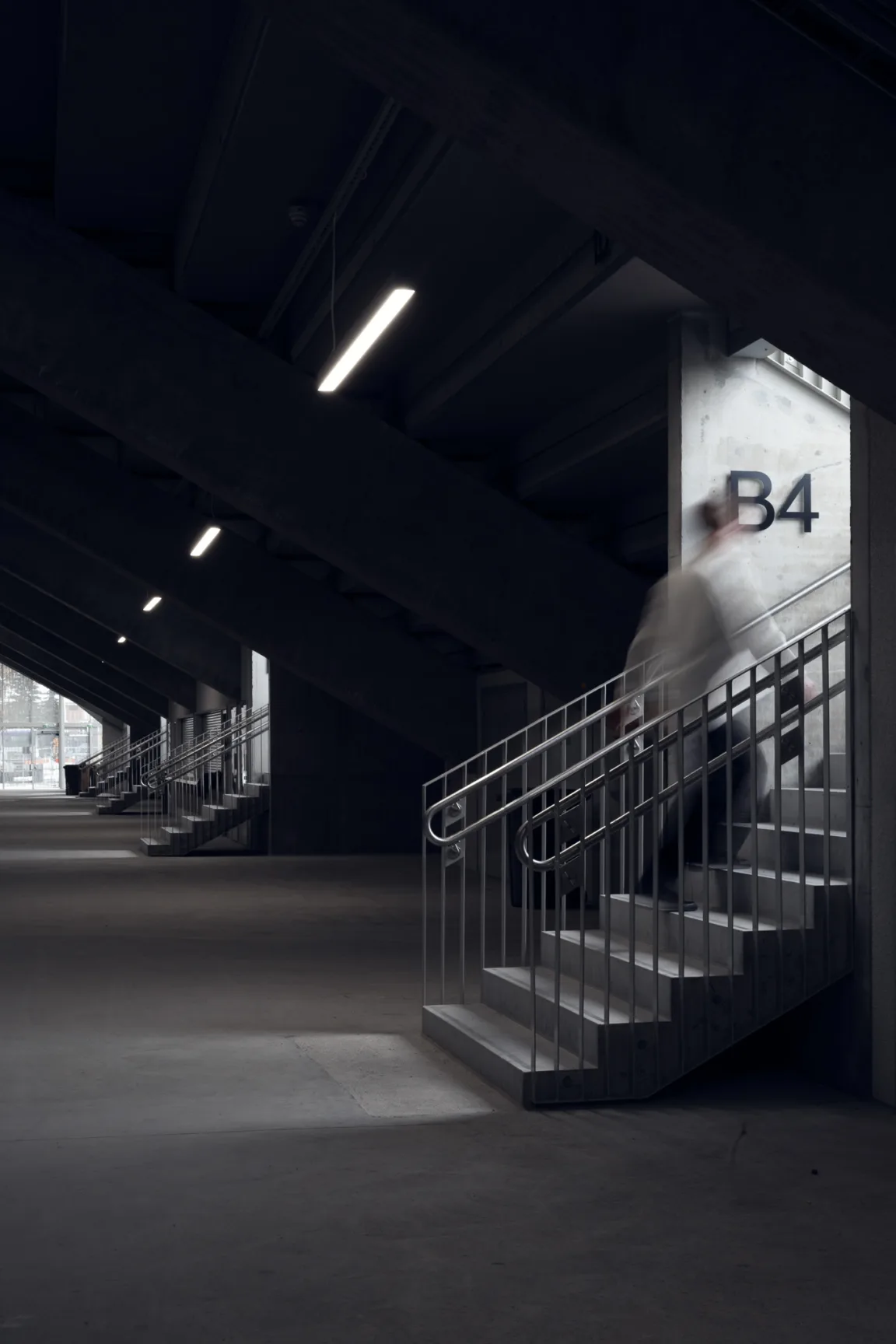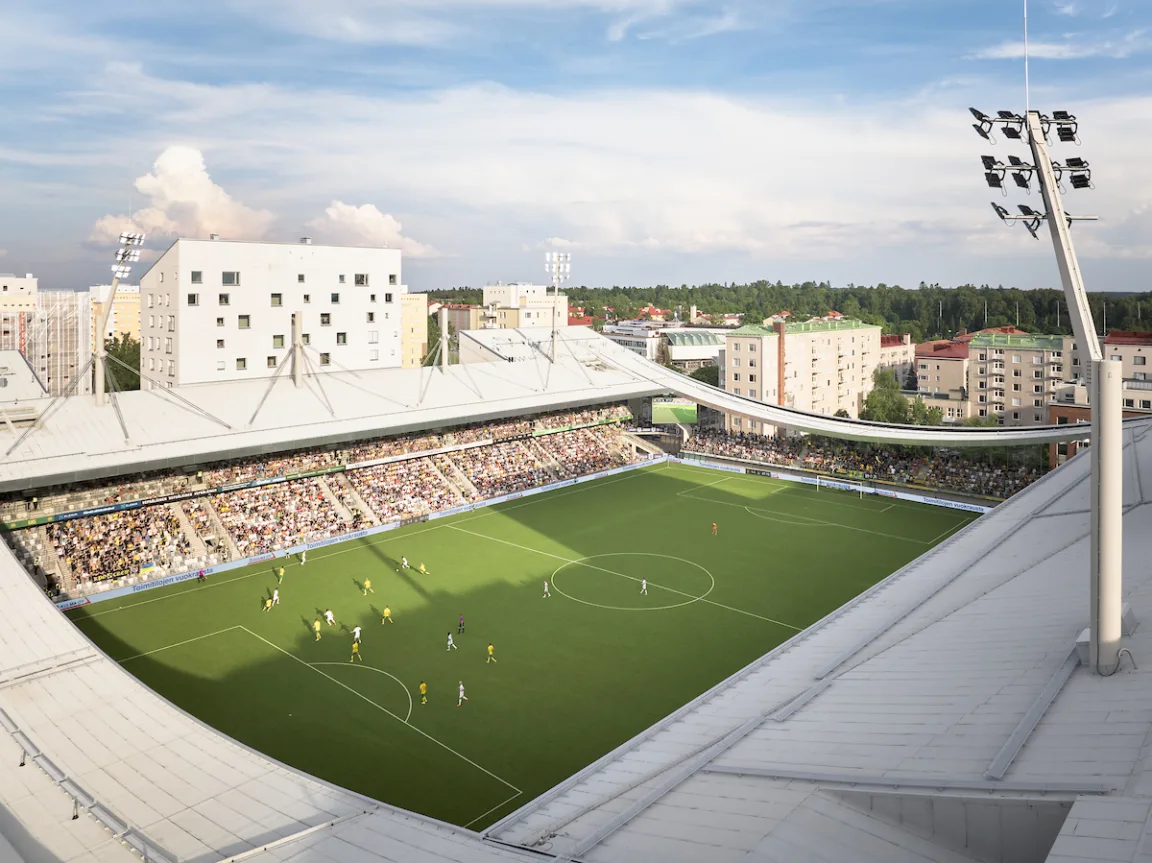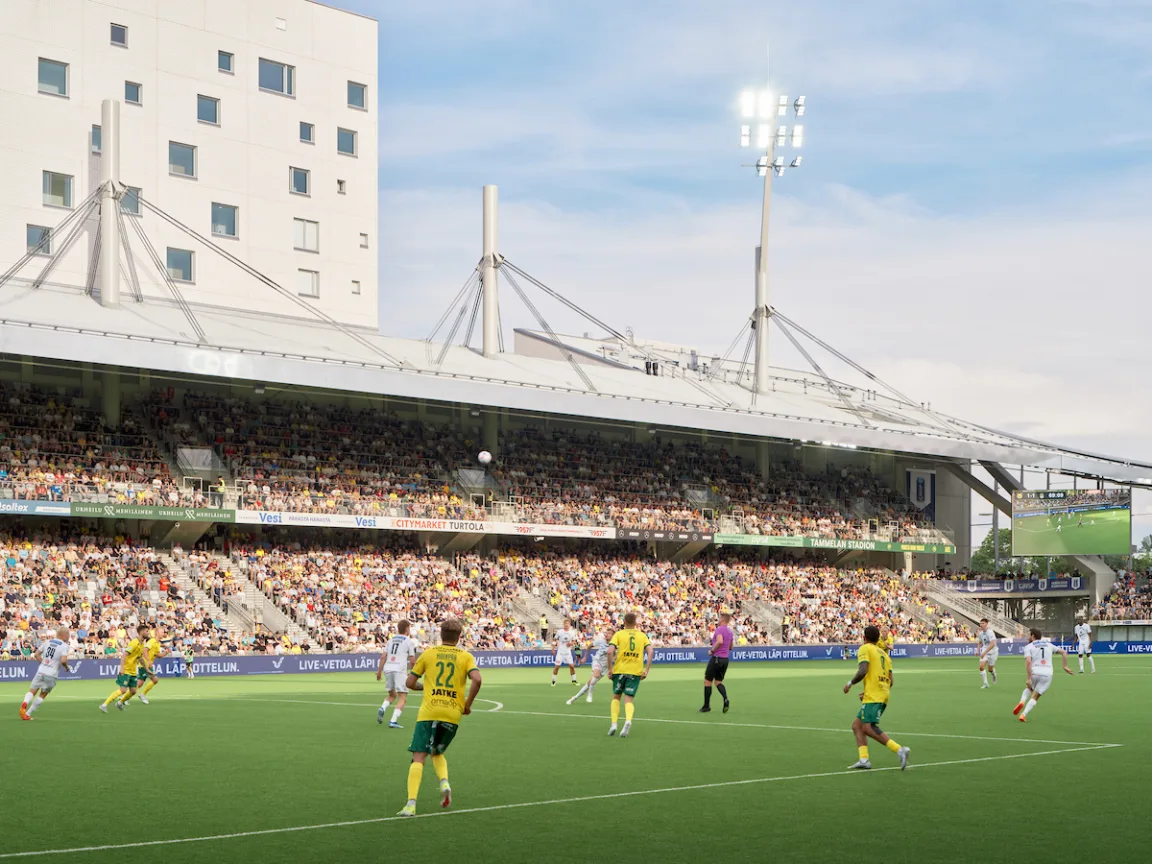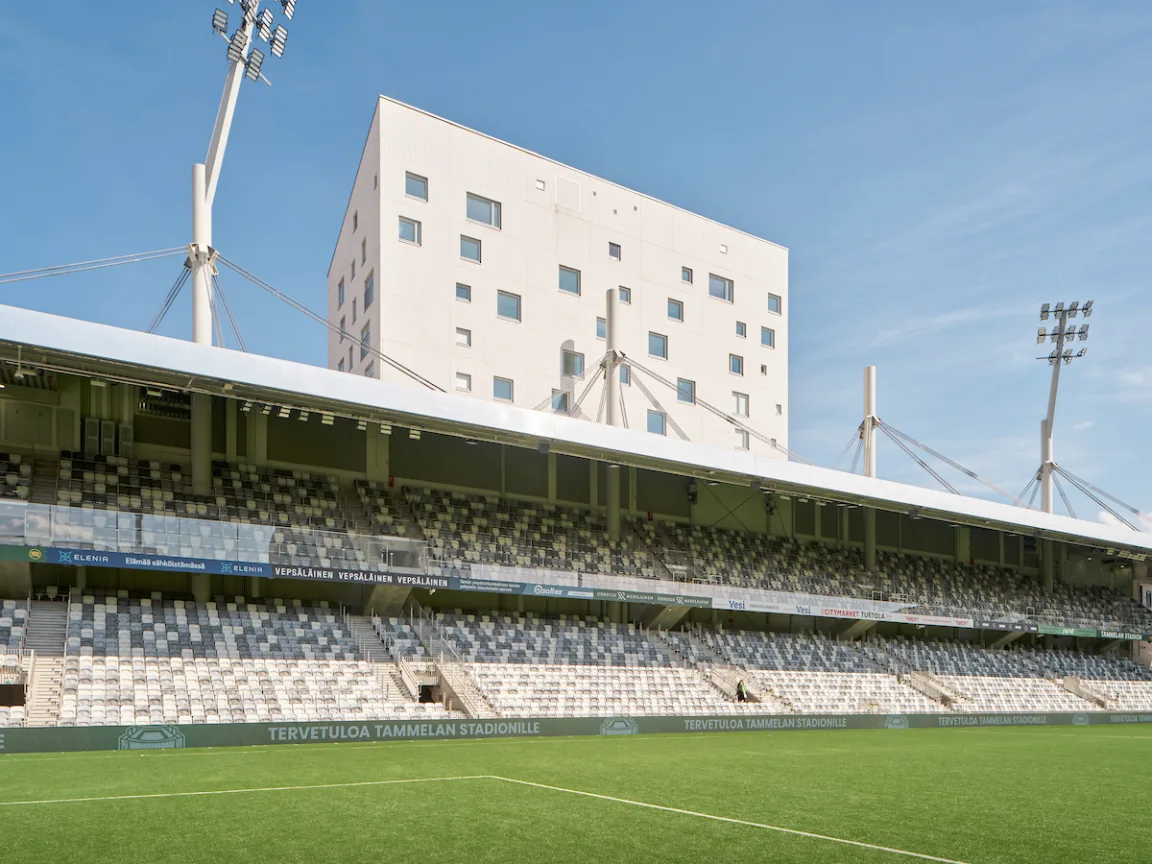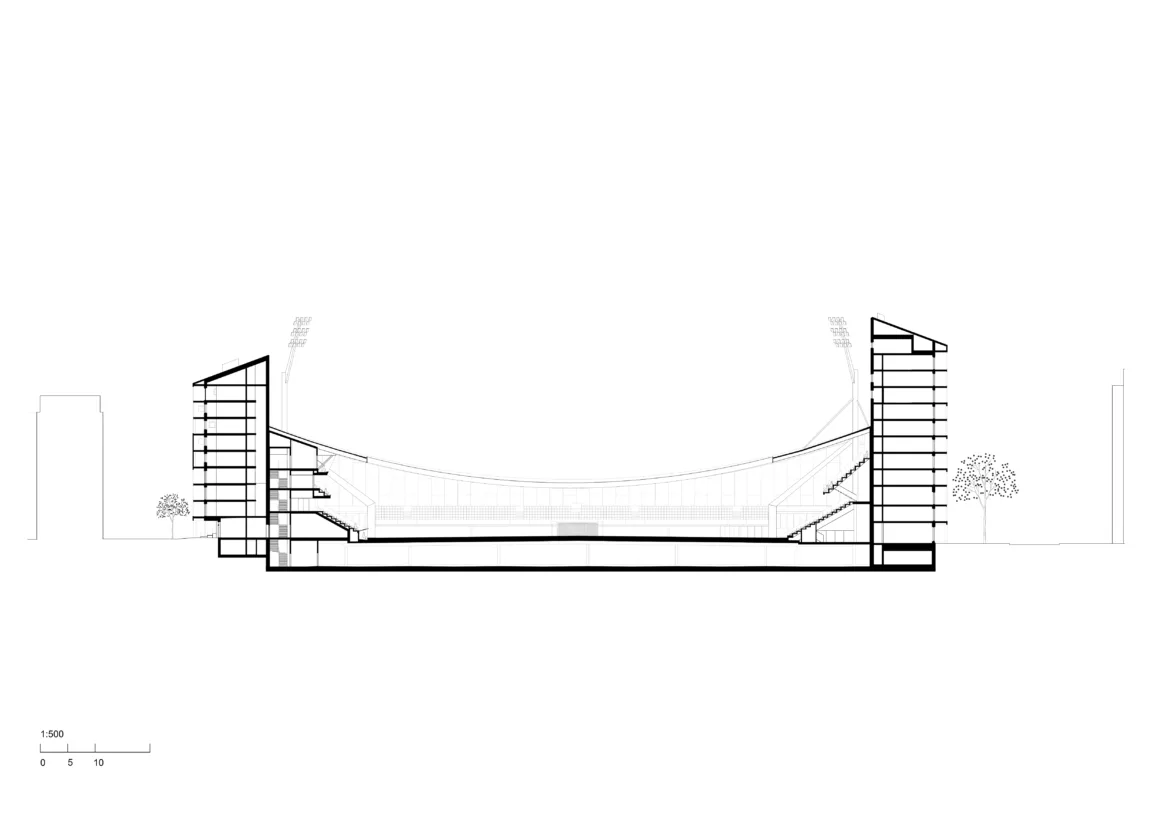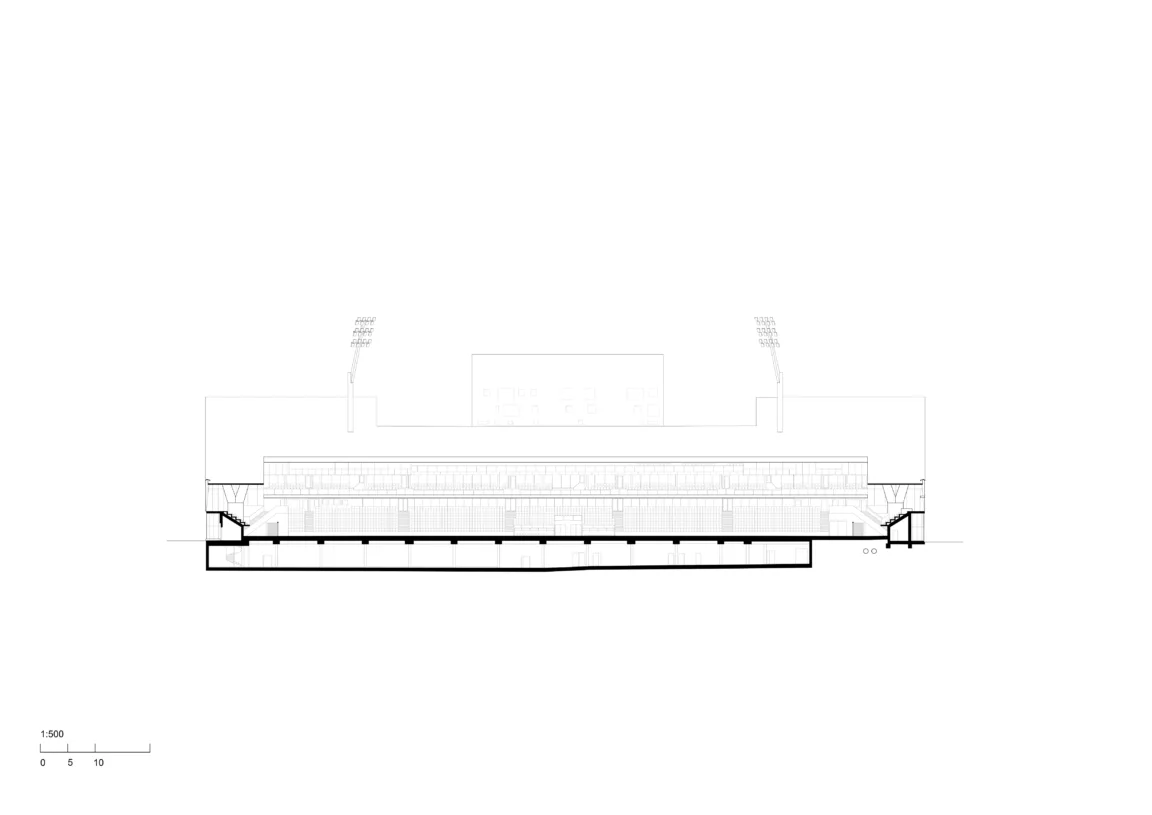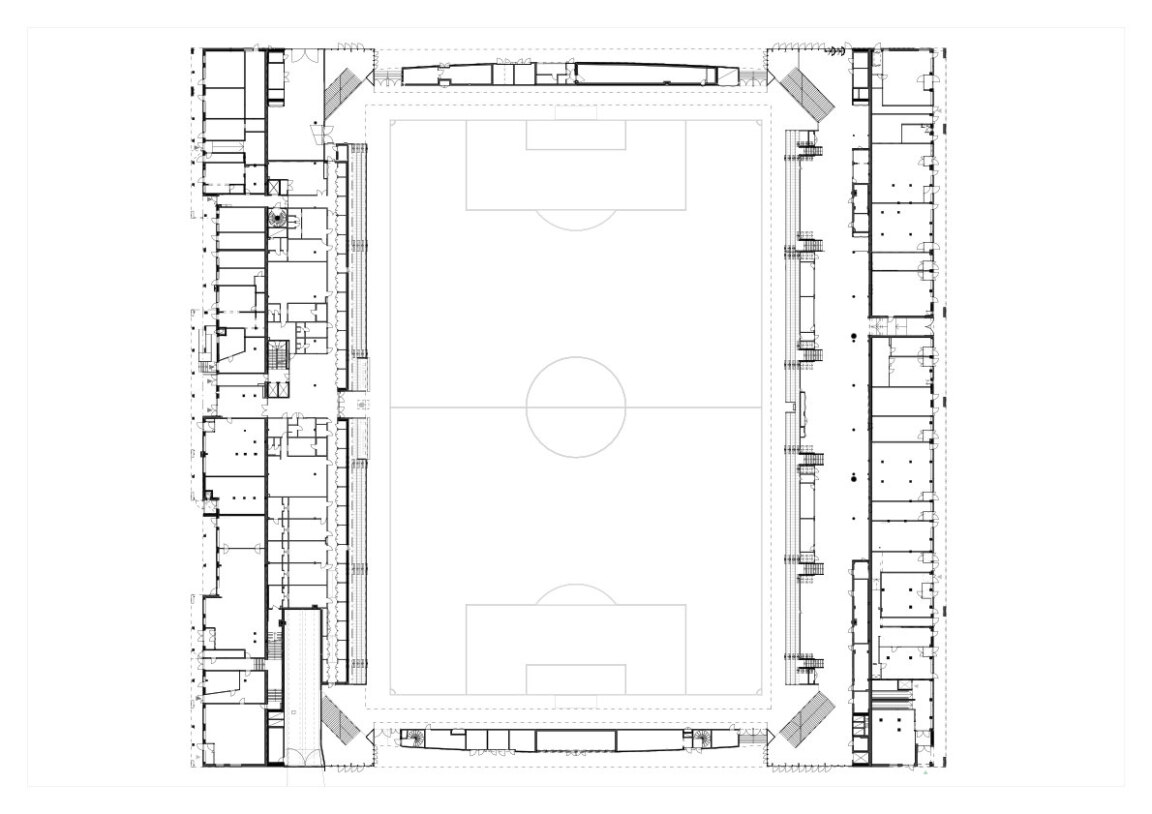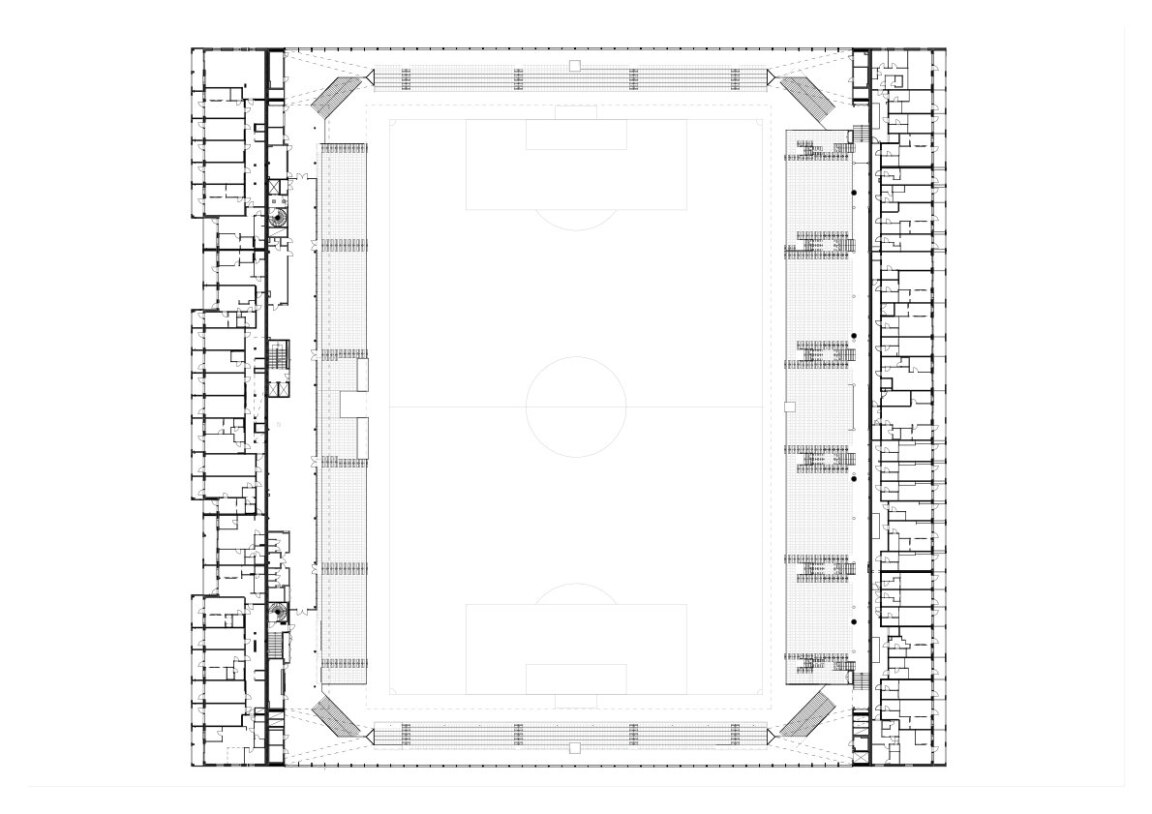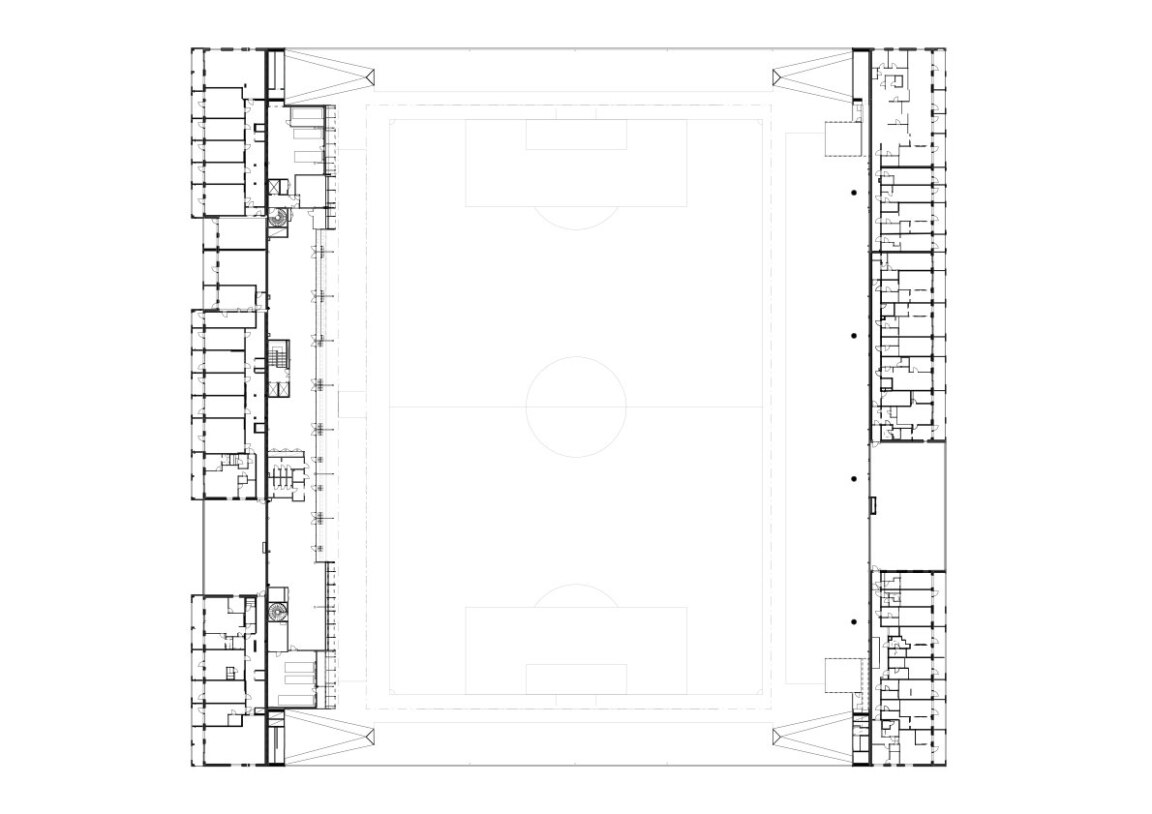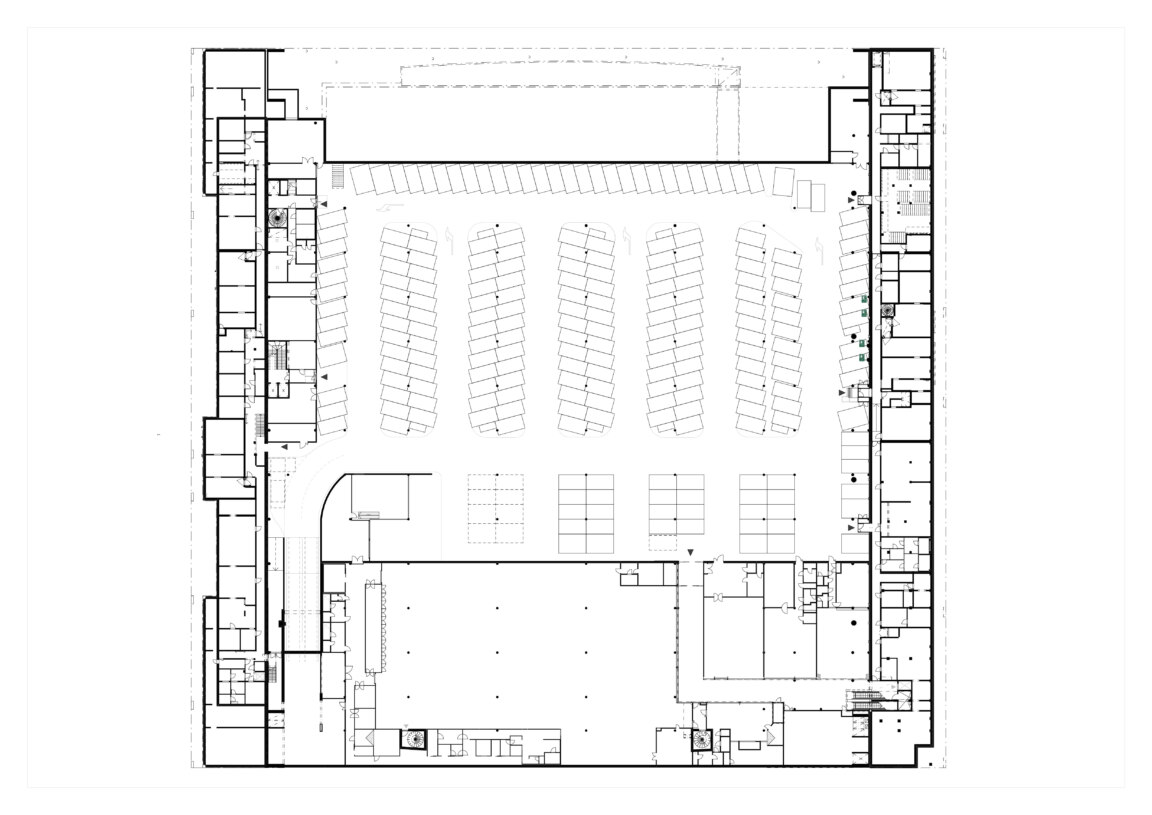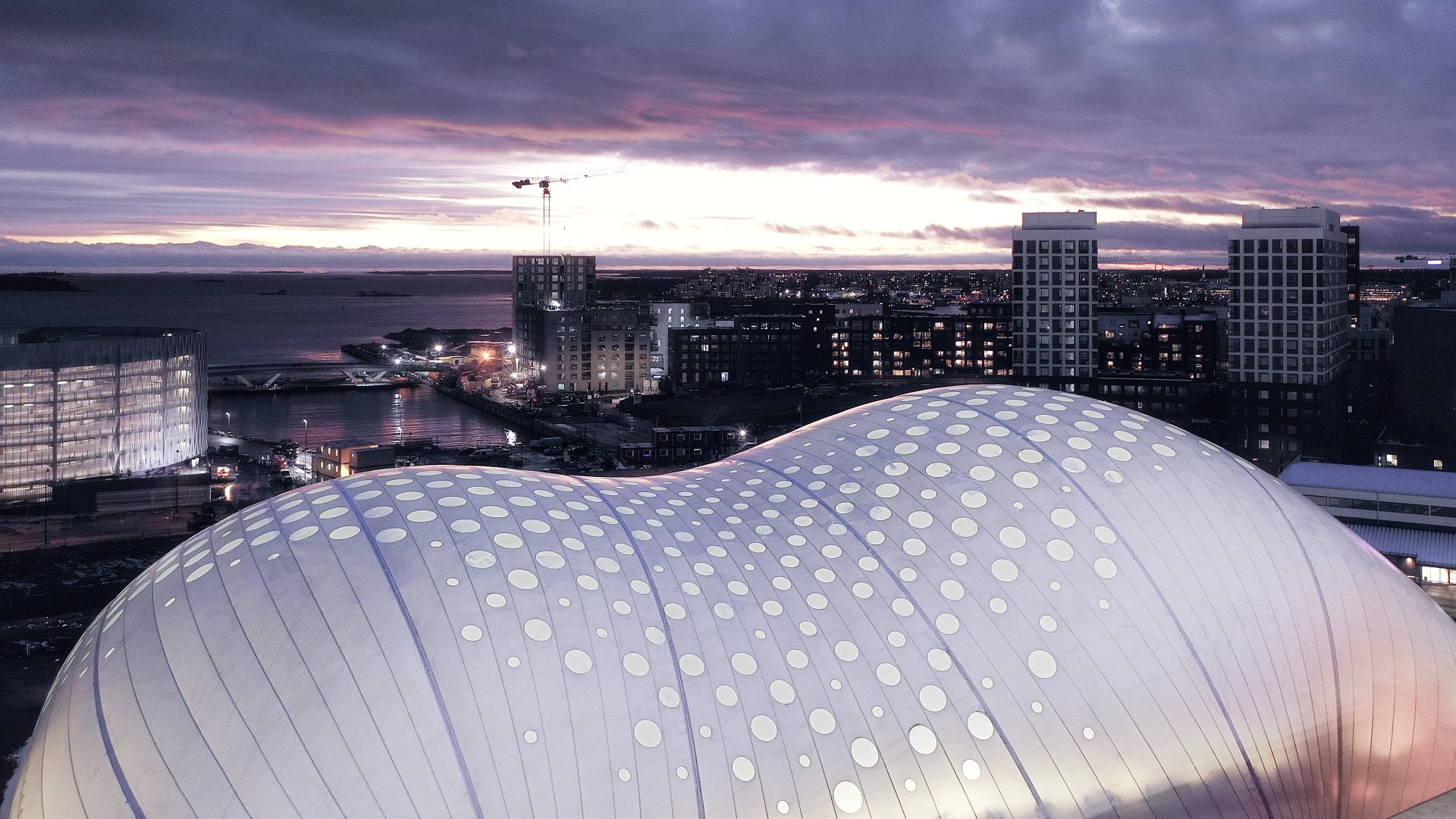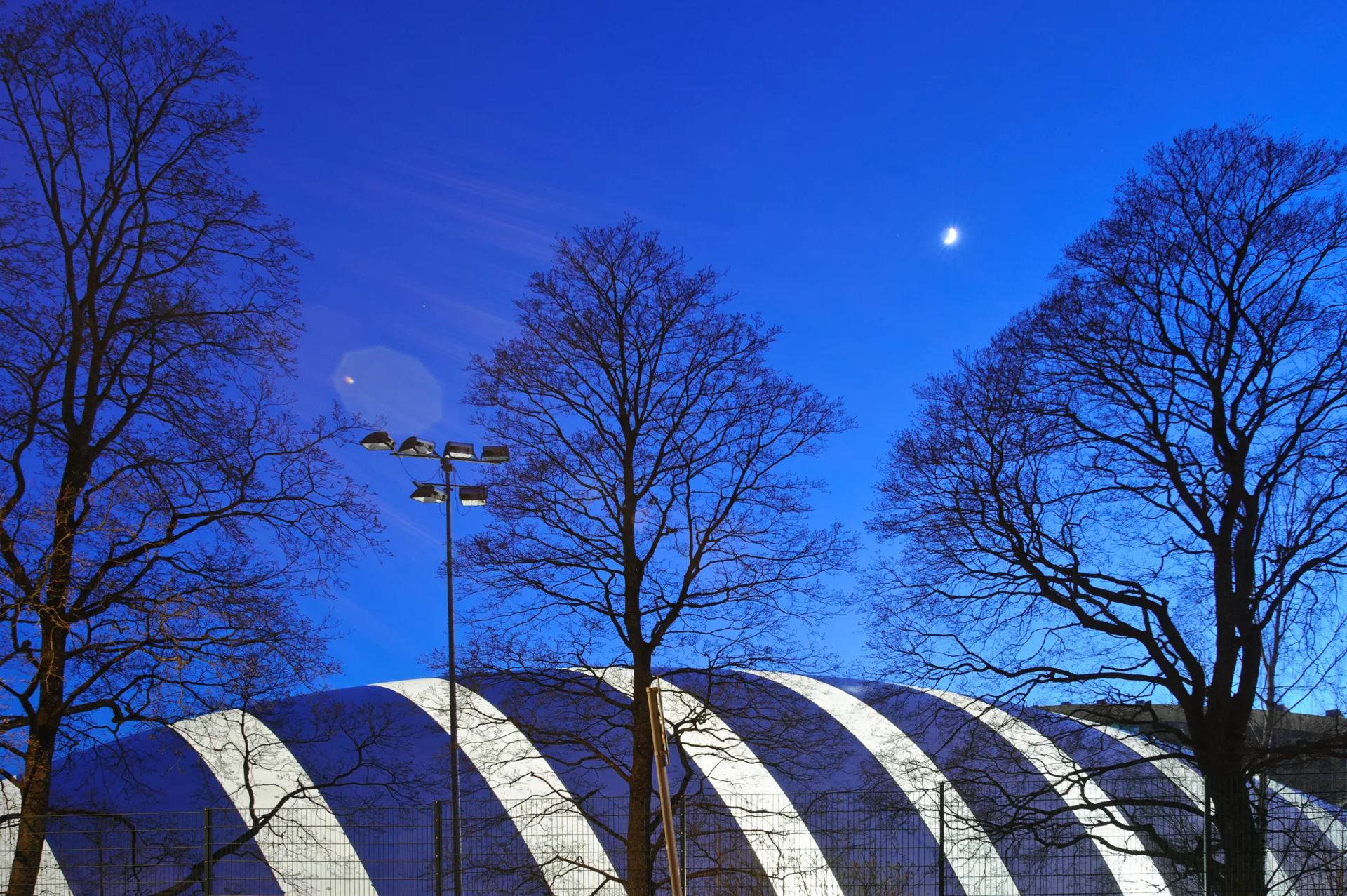Tammela Stadium
Finland’s First Hybrid Football Stadium
Finland’s first hybrid football stadium was completed in spring 2024 in the Tammela district of Tampere. The new stadium has been eagerly anticipated in the city. The project, which is a collaborative effort between the City of Tampere, Pohjola Rakennus, and JKMM Architects as part of an alliance, took over a decade tobe realised.
The stadium sits wedged in the middle of what is nearly a 50,000 square meter city block, that consists of eight interconnected plots. On the east and west side are residential buildings and beneath are service and parking facilities.
The football stadium project covers 13,500 square meters and provides high-quality facilities for the home-teams’ sporting activities and for top-level football events, with a seating capacity of 8,000 spectators. The stadium meets the main UEFA category 4 requirements, which means it can be used for both UEFA Europa League and national team matches. Every seat in the stadium offers an unobstructed view of the entire field! The stadium can also accommodate 15,000 people concerts and other large scale events. But, foremost, the stadium is the home of the local football club; Ilves Tampere!
The aim of the design of the hybrid complex was to create a high-quality cityscape and to integrate the football stadium into it’s dense urban environment and at the same time maintain a very high-quality setting for football matches and training throughout the year. At street level, the stadium’s public spaces surround the pitch on three sides, the main circulation route with access to the stands is on the second level. VIP and events spaces are located on third and forth floors of the west stand. The residential buildings define the outside border of the stadium block, connecting it to the surrounding urban fabric. Parking, services and a small retail centre, as well as residential support facilities are in the basement.
